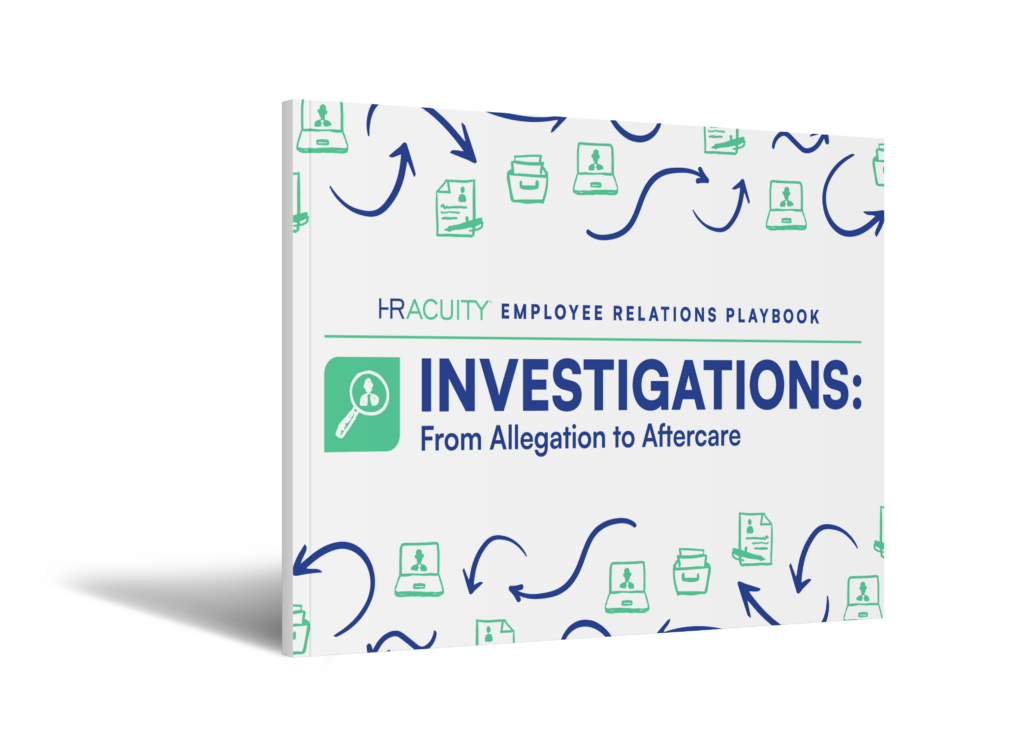According to Zippia, 69% of employees say they’d work harder if they felt more appreciated at work. Employees are more likely to be engaged and productive when they feel respected and understand their place in the organization. However, if you’re not a small business, managing a large number of employees spread out across multiple departments and locations can be a challenge. Employee management, also known as people or workforce management, is a key employee relations (ER) strategy for maintaining a healthy, positive team and customer experience.
The Importance of Employee Management
Employee management is the act of ensuring that an organization’s employees receive the best treatment possible. It involves making sure that employees’ rights are well protected and that they’re able to enjoy the organization’s perks. Successful employee management benefits the organization as a whole as it helps build and retain an engaged, loyal and motivated workforce. HR and ER departments have to work closely with direct managers to implement the right employee management strategies.
Employee management includes a number of different fundamental aspects, each with its own purpose and significance. These include:
- Employee performance management
- Onboarding and offboarding
- Training and development
- Compensation and benefits
- Conflict resolution
- Corporate culture
A variety of potential scenarios are taken into consideration while implementing the right strategies. Whether it’s mediating an issue between two employees or reviewing deadlines to improve productivity, ensuring employees get the support they need is key to employee management.
Best Practices for Employee Management
People managers are the main point of contact to facilitate communication and support between employees and the upper levels of management. Because of this direct relationship, it’s crucial that they know how to navigate different personalities and work ethics to effectively facilitate positive outcomes.
Here are some best practices to ensure successful employee management:
Be aware of the many different aspects that make up employee management.
While your people management responsibilities will be highly dependent on your organization, there are many aspects that are consistent across most teams. These include:
- Recognizing employees as individuals and treating them with respect and dignity.
- Clearly communicating the organization’s vision and goals to employees.
- Avoiding legal and financial pitfalls when making decisions, including the legal implications of employment laws and the ramifications of conflict resolution.
- Acknowledging employees’ value and contributions and compensating them accordingly.
- Empowering employees to manage their own work and take action to solve problems when necessary.
- Being available to employees and taking the time to listen to their concerns and issues.
Develop the right soft skills to support your leadership.
Most effective people managers develop their soft skills over time and through experience. But there are specific skills that can be learned, mastered and applied to their work, including the following:
- Communication: Effective communication is vital to employee management. Leaders should be able to speak clearly and confidently and know how to express their thoughts in a way that’s appropriate to the audience.
- Patience: Patience is necessary for employee productivity and talent management. You must accept that not everyone will respond the same way to a task and be able to handle a variety of personalities and attitudes.
- Active listening: Active listening involves ensuring you fully understand what a person is saying and then responding in a way that’s relevant to the situation. Asking questions, summarizing the information and demonstrating empathy can all be important parts of active listening.
- Conflict Resolution: Conflict can occur in any work environment – even with remote employees – and it’s important that leaders know how to properly manage disputes. This can include not only solving the disagreement but also preventing future conflicts from arising.
Collect quality data from a wide range of sources to build a robust, holistic picture of your employees.
Use technology, such as HR Acuity’s anonymous reporting software, to collect details within your employee database and better understand where issues are bubbling up. Understanding the intersection of those data sources will help paint the true picture of what the employee experience is throughout the organization. HR Acuity provides anonymous reporting, messaging capabilities and investigation transparency so employees can voice concerns without fear of retaliation.
Make diversity a big part of your company’s identity.
Within the workplace, diversity can be defined as your team’s collective similarities and differences. The more diverse your workforce is, the more perspectives your organization will have to offer. In the workplace, diversity promotes creativity, innovation and a sense of belonging – and your company’s identity is partly defined by the people you hire and how they work together.
Although many organizations are increasingly investing efforts toward diversity, they’re still struggling to ensure that the benefits are being fully realized. However, by collecting and analyzing employee data, you can more effectively leverage and celebrate diversity across your team. It’s not always easy to build a diverse and inclusive workplace; organizational development practitioners and HR business partners can help you address many common issues that hinder progress.
Download the Employee Relations Playbook
Everything you need to know from
Allegation to Aftercare.

Implementing an employee management strategy
The results that employee management practices have on productivity and profitability are undeniable. Not only does effective employee management affect the bottom line, but it can also impact your team’s overall morale and motivation and increase employee retention. That said, it’s important to keep in mind that managing employees isn’t one-size-fits-all. Different approaches will be needed depending on the size of your business, the industry you work in and the goals of your business.
Employee management is an ongoing process and it takes time and effort to be successful. The goal of any effective employee management strategy is to motivate your employees, reduce employee turnover, boost customer success and create a positive and productive work environment.
Many organizations have found that adopting a formal employee management system is the best way to achieve these goals. A well-written strategy can ensure that everyone is on the same page and understands their role. It also sets the foundation for building a positive workplace culture.
Human resources professionals are often tasked with creating this management system, but they should only be used as a tool to equip team leaders to manage their employees effectively. Each strategy should include clear objectives, specific metrics and performance indicators that managers can use to measure progress and success. Additionally, they should also include their management philosophy’s key elements and how they intend to work with employees to achieve these goals.
Focus on your employees’ skills, knowledge and abilities and strategically place them where they’re best suited and can make the most impact. Your business can maximize its output and profits by employing a workforce that is optimized to its fullest potential.
And, finally, you should also outline the training and development that you’ll provide to ensure that your employees can continue to fulfill their responsibilities. You may also include a plan for how you’ll use technology to support this.
Boosting Performance With Effective Employee Management
Measuring employee performance is critical for boosting productivity and ensuring your business is operating efficiently. If you’re not using an effective method for measuring employee performance, you might be missing out on opportunities to motivate your staff. You can utilize a variety of metrics. These include key performance indicators (KPIs) and objective and key results (OKRs) to help create a balanced workforce. This method can be evaluated using a variety of tools and software, including a combination of data collection methods such as surveys and interviews.
An increase in productivity calls for many different smaller components that all contribute to the end goal. ER and HR professionals, as well as team leaders, can utilize the following elements to boost productivity:
- Develop a plan to identify and hire the best talent for the organization.
- Outline specific onboarding schedules and procedures that will help new employees acclimate to the company’s culture.
- Continuously set up training programs for the team to encourage professional growth and development.
- Promote collaboration and teamwork among employees as well as open communication with management and fellow team members.
- Encourage employees to take advantage of the benefits and programs available to them through the company.
- Utilize a variety of methods for employee feedback and engagement such as surveys, online polls and other employee engagement tools.
- Become more involved with the employees on a personal level. This includes spending time with the team, participating in their work and offering constructive criticism.
There are many different options for implementing employee management strategies that can help you boost team productivity. To get started, take a look at the following best practices for incorporating an employee management system into your HR and ER department:
- Plan ahead of time for any major necessary changes that need to be made. This includes scheduling meetings and time for your employees to complete new tasks, as well as making sure that they’re familiar with the new procedures being implemented.
- Roll out the new strategy in an exciting and upbeat way. Let them know the value of the new strategy and provide incentives for them to take part in the preparation process.
- Be ready to answer any questions or concerns that your employees may have about the new procedures. This can help to make sure that everyone is set up for success.
- It’s going to take some time for everyone to adjust to the new environment. Be patient and understanding during this transition period and allow your employees time to learn and become comfortable with the changes.
- If a specific strategy doesn’t work, try something new. Don’t get discouraged if you try one method and it doesn’t produce the results you had hoped for. Oftentimes, it takes a little trial and error to find the right approach for your team.
Employee management is fundamental to the success of your business. With the right approach, you can ensure that your employees are engaged which in turn helps keep top talent and saves your organization money in the long run.
See HR Acuity's Solutions in Action
Discover why HR Acuity is the preferred employee relations management software.
How Can Employee Management Software Support Employee Relations?
Every organization has its own unique culture, and managers help form this culture by keeping employees engaged and productive. A successful employee management strategy is flexible enough to account for your company’s unique needs while still maintaining your organization’s integrity. Technology can help you accomplish this by allowing you to create a tailored employee management system that can support the relationship between employees and their supervisors, as well as between employees and the company as a whole.
An employee management system is a software solution that enables you to manage your company’s human resources and employee relations functions in a systematic way. This type of software can track employee data, generate reports and communicate with supervisors and employees. Furthermore, this tool can automate many HR tasks such as tracking employee performance and facilitating the onboarding process. Employee management software can also help you establish and maintain relationships with employees by providing you with the tools you need to create a positive work environment that caters to your employees’ unique needs and requests.
HR Acuity offers cloud-based employee management software such as ManagER that can help you manage your employees from hire to retire. It provides a complete suite of data-driven and analytical resources for tracking employees and their performance, as well as maintaining employee records and properly handling workplace investigations – all in a central location. The software is user-friendly, and is customizable to meet your company’s needs.
Interested in learning more about how HR Acuity can help you manage your employees? Request a free demo today!



